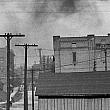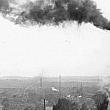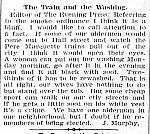
Air Pollution in Grand Rapids 100 Years Ago
by Diana Barrett
published: June 24th, 2007
We tend to think of air pollution as a current dilemma, but in the early 1900s the nation's cities, including Grand Rapids, experienced increased industrialization, which increased the demand for electricity, and growth of the railroads, all of whom burned coal. Severe air pollution in cities caused citizens to protest, forcing councils to pass smoke abatement ordinances and employ smoke inspectors. In April of 1907 Louis C. Towner, a stationary engineer, became the city’s first smoke inspector. (Find more information to your right in Related Items)
An article about Towner in the Grand Rapids News in May of 1911 shows him in the city hall clock tower, 160 feet above the pavement and thirty feet above the clock, where he could observe the smoke stacks of business and industry and chart the violations of polluters. He kept precise charts of smoke emissions tracking the color and density of smoke coming from factories.
Towner's office was on the first floor of city hall, but he maintained a perch in the city hall tower. The clock was housed on the first floor of the tower, and a metal ladder reached to the top of the tower where Towner built a platform so he could view the whole city. He taught himself photography in order to back up his charts with visual evidence, and they could be used in court if prosecution was necessary.
From his tower perch Towner caught this smoke emission from the Grand Rapids Brewing Company, located at the corner of Michigan and Ionia. He documented his photographs on the sleeves covering the glass negatives. Notes for this photo were: May 13, 1911; 7:25 a.m.; 1/10 sec., 16 stop; City Hall Tower; 4 minutes (probably indicates the length of time the smoke continued to spew from the stack).
Not all of the smoke inspector’s charts and photos were recorded from the clock tower. Many were made from upper floors or roofs of factories. The Grand Rapids Sticky Fly Paper Company at 58-66 Seward Ave., just north of Fulton St., was one of many photos that Towner used to document pollution problems. The factory was located among houses that can barely be seen through the smoke, and Lexington School is on the left just a couple of blocks away.
When Towner began work in 1907 he compiled a history of all boilers and furnaces in the city and the size of the smoke stacks being used. His approach was one of carrot rather than stick--he worked to educate business by showing them how to reduce costs by burning coal more efficiently thus cutting down on smoke, soot, and cinders. This report card for the Voigt Milling Co., located at the west end of Pearl St. at the bridge, shows the change as the mill went from "very bad" to "clear."
Not all of Towner’' photos show heavy black smoke emissions. This one of Voigt Milling, located on the west bank of the Grand River, taken in May of 1911 shows relatively clean smoke coming from the stack as was charted in the report card above. The banks of the Grand River on both the east and west side were lined with industries that contributed to the haze of smoke that hung over the city.
The advertisement for the Eclipse Smoke Indicator uses the theme of the smoke inspector in its headline, "Quit Dodging the Smoke Inspector." It refers to the fireman, and at the time that's what the men tending the furnaces were called as were men who had the same job on railroad engines. Towner only used a firm approach with those who refused after many warnings to reduce their smoke emissions.
Through Towner's influence the International Association for the Prevention of Smoke--an organization of smoke inspectors founded in Detroit--met here in 1914. Towner who had been national vice-president was elected the national president. The organization still exists but over the last century the name has changed several times. It’s currently the Air Waste Management Association and in 2007 it celebrates 100 years of environmental stewardship.
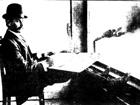
The first episode of the collaboration between the Community Media Center and the Grand Rapids Historical Commission focuses on the GR's first 'Smoke Inspector' Louis C. Towner.
Bibliography
Books available at the GR History and Special Collections, Grand Rapids Public Library
- Butcher, G. LaVerne. This is the Way it was with the Towners and Butchers. Riverside, CA: Hearne's Bookcrafts, 1977.
- Proceedings of the Grand Rapids Common Council Minutes, 1876-1917

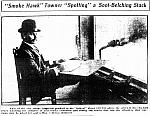

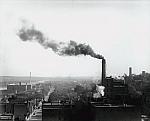
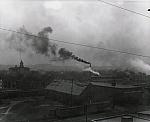
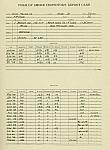
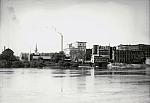

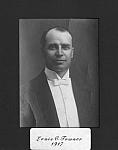
 facebook
facebook
